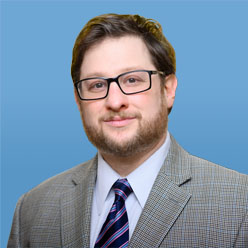March 1:
Beginning May 1 China’s military will begin using new car license plates and will “tighten approval procedures to stop civilians from using military car plates and the use of fake plates,” the official Global Times reports. The announcement was made after pictures were posted online of rows of luxury cars parked at dining and entertainment venues carrying military car plates during Chinese New Year. The military will “harshly crack down on” counterfeit military cars, said a military spokesperson. In China, cars with military plates, which are a different color and number, enjoy exemption from road tolls and parking fees.
[Editor’s Note: In July 2011, the Supreme People’s Court (SPC) and Supreme People’s Procuratorate ordered the People’s Liberation Army to enforce new laws penalizing people who forge military documents, uniforms or car license plates. Such practices are “rampant,” said a SPC spokesman, who said that each year the forgery of military license plates alone cost the state 1 billion yuan in taxes and road tolls. Fake military ID cards and uniforms are regularly used to defraud and deceive the public.]
March 3:
Chinese warships now regularly patrol within the South Korean Navy’s operational zone in the Yellow Sea without prior notification, Yonhap news agency reports. To cope with the rising Chinese naval presence, South Korea’s navy chief has vowed to strengthen Seoul’s naval forces. Although it is unclear when they began, China’s destroyers and escort vessels now enter the so-called area of operations (AO) under the Korea Air Defense Identification Zone (KADIZ) to conduct maneuvers once or twice a week. “Chinese authorities claim it is part of their normal maritime operations, which effectively means that they don’t recognize the AO,” said a South Korean military source. International laws do not restrict foreign ships operations in the AO.
March 7:
Yu Zhengsheng, a member of the all-powerful CPC Politburo Standing Committee, has held a closed meeting with Hong Kong delegates to the Chinese People’s Political Consultative Conference (CPPCC) in Beijing. During the meeting, the first time a member of the new CPC leadership has addressed Hong Kong controversies, Yu denounced Hong Kong residents who wave colonial flags and warned that “opposition forces” would not be allowed to rule the city after universal suffrage was introduced in 2017, the South China Morning Post reports. Yu said Hong Kong could not become a base and bridgehead for subverting the mainland. “That’s not good for Hong Kong or the country.”
March 8:
The 2013 National People’s Congress (NPC) and the CPPCC are the largest gathering of billionaires in the world. Together both assemblies include 83 members that are billionaires in U.S. dollars: 31 are NPC deputies and 52 CPPCC delegates, the South China Morning Post reports. They include the founders of some of China's best-known brands, including Robin Li Yanhong of Baidu, Yang Yuanqing of Lenovo, and Cao Dewang of Fuyao Glass. Wahaha’s Zong Qinghou, who begins his third five-year term, is the richest NPC deputy, with a fortune of $13 billion. Tencent’s Ma Huateng, 42, is second with $7.5 billion. Newcomer Fang Wei, 40, is the NPC’s youngest billionaire deputy. Jiangsu has six political billionaires, the most of any province. The average age of an NPC billionaire is 54, while for CPPCC delegates it is 50.
March 10:
The National People’s Congress has rubber-stamped CPC plans to consolidate cabinet-level ministries to 25 from 27. The Ministry of Railways will be split up. China Railway Corp. will oversee the commercial duties, while the trains and railways networks will be placed under the Ministry of Transportation. The State Administration of Food and Drug will be elevated to a general administration, expanding its power to combat tainted food and drugs. The Health Ministry will merge with the National Population and Family Planning Commission, which manages the one-child policy. And two agencies that manage and censor the media, the General Administration of Press and Publication and the State Administration of Radio, Film and Television, will be merged into one. The government will also streamline the National Energy Administration to change the way the energy industry is regulated, The New York Times reports.
Want these sent to your inbox?
Subscribe
China Reform Monitor: No. 1022
Related Categories:
China
